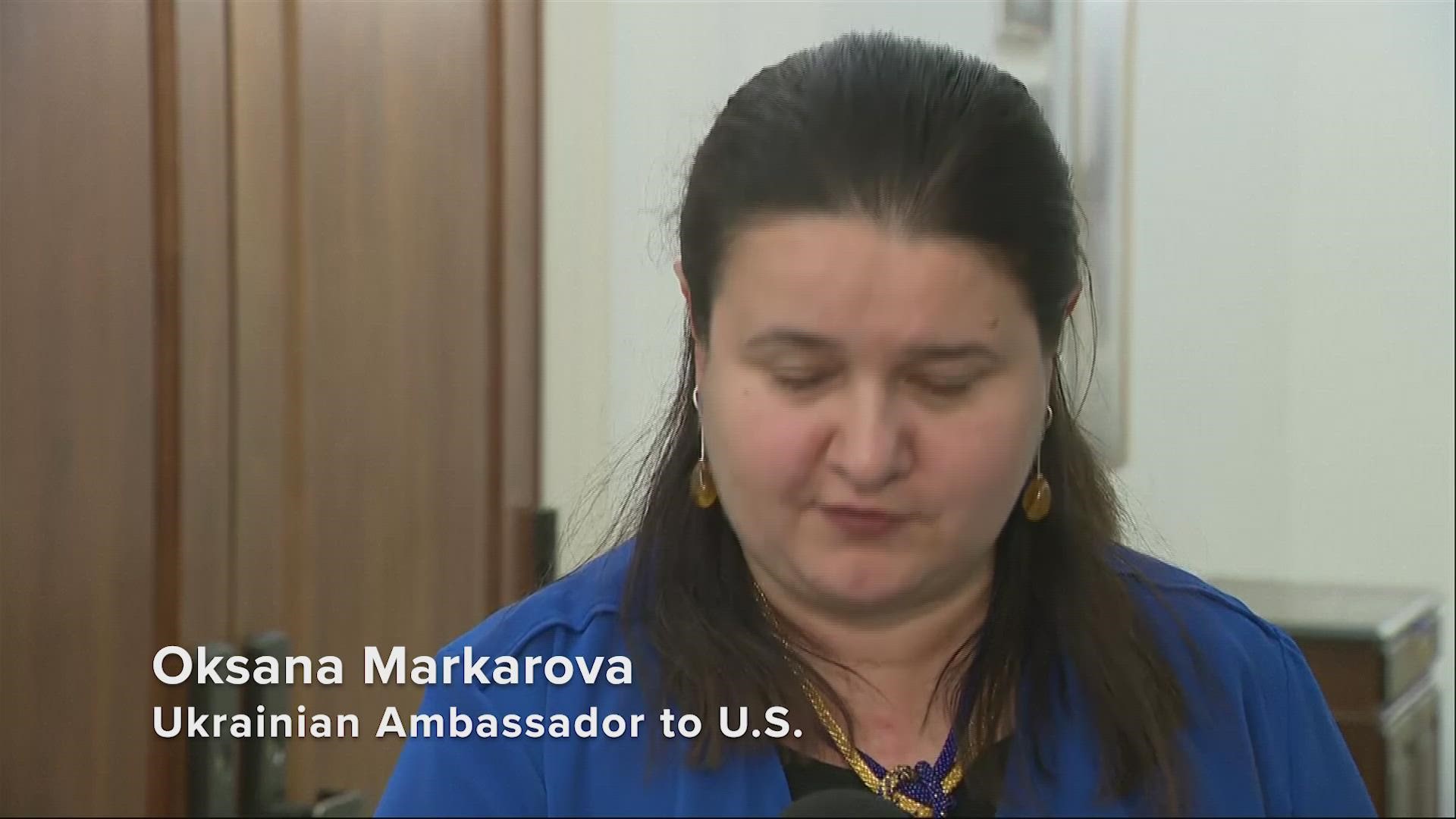WASHINGTON — Ukraine's ambassador to the United States accused Russia of using a vacuum bomb in its war on her country Monday. The White House said if its true, use of such a weapon could constitute a war crime.
"They used the vacuum bomb today, which is actually prohibited by Geneva Convention," Ambassador Oksana Marakova told reporters on Capitol Hill Monday. "The devastation that Russia is trying to inflict on Ukraine is large, but Ukrainians will resist. We are defending our home."
There was no immediate response from Russia confirming or denying the claim. Marakova did not state where the alleged used of the vacuum bomb happened.
White House press secretary Jen Psaki told reporters earlier in the day the Biden administration can't confirm reports of the vacuum bomb. But she said, if it is true, "it would potentially be a war crime."
What is a vacuum bomb?
A vacuum bomb is a thermobaric weapon, and has also been called a fuel-air explosive (FAE). A 2000 report by Human Rights Watch cited a Russian military scientist who said such weapons have the destructive capability of low-yield nuclear munitions.
The Human Rights Watch report said a typical FAE has one container of fuel and two explosive charges. Once the bomb is fired or dropped, the first charge opens up the container while it is still at a certain height to spread a fuel cloud that can go around objects and structures. The second charge ignites the fuel, creating a large blast wave.
Why is a vacuum bomb so dangerous?
A 1993 U.S. Defense Intelligence Agency study, cited by Human Rights Watch, indicates an FAE can kill, injure or cause brutal harm in multiple ways.
"The [blast] kill mechanism against living targets is unique--and unpleasant...." it reads. "What kills is the pressure wave, and more importantly, the subsequent rarefaction [vacuum], which ruptures the lungs.... If the fuel deflagrates but does not detonate, victims will be severely burned and will probably also inhale the burning fuel. Since the most common FAE fuels, ethylene oxide and propylene oxide, are highly toxic, undetonated FAE should prove as lethal to personnel caught within the cloud as most chemical agents."
The Human Rights Watch report said when multiple FAEs are exploded, the different blast waves reinforce each other.
"The effect of blast weapons is also compounded in buildings and other enclosed spaces, and is twelve to sixteen times more destructive than conventional high explosives against targets with large surface areas, such as frame buildings, bunkers, and vehicle shelters," it said.
The Geneva Convention was first adopted in 1864, according to Cornell Law School. It was initially aimed at protecting wounded soldiers and medical personnel from being attacked if they were not conducting hostile activities. It was later extended to shipwrecked sailors and demanded humane treatment of civilians and prisoners of war.
Protocol III of the Convention on Certain Chemical Weapons prohibits or restricts use of incendiary weapons.
"'Incendiary weapon' means any weapon or munition which is primarily designed to set fire to objects or to cause burn injury to persons through the action of flame, heat, or combination thereof, produced by a chemical reaction of a substance delivered on the target," the protocol reads.
Protocol III says using such weapons against civilians is prohibited, even if there is a military presence among them.

